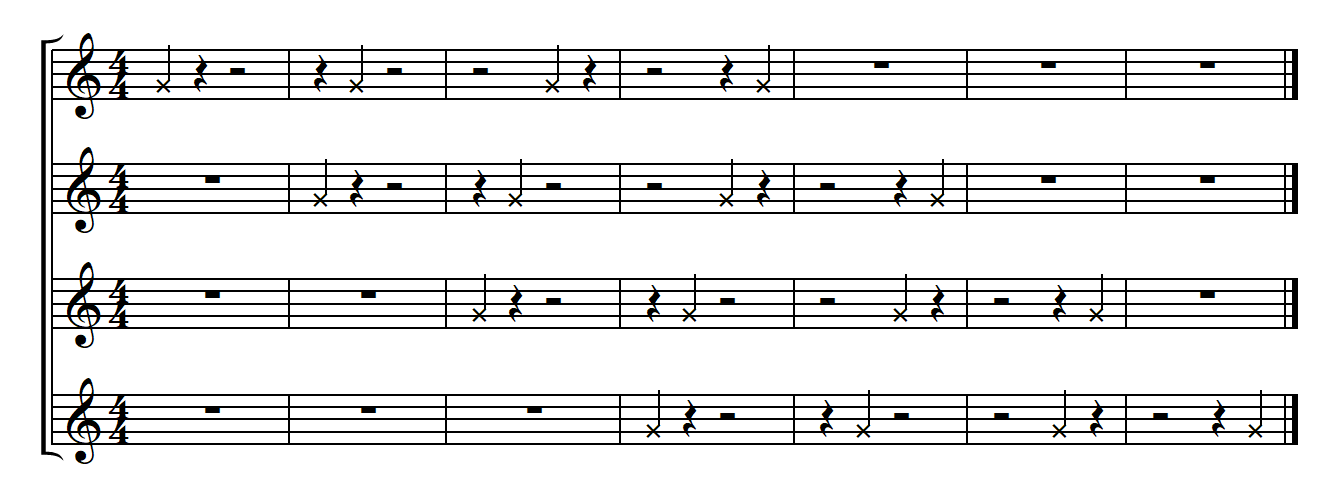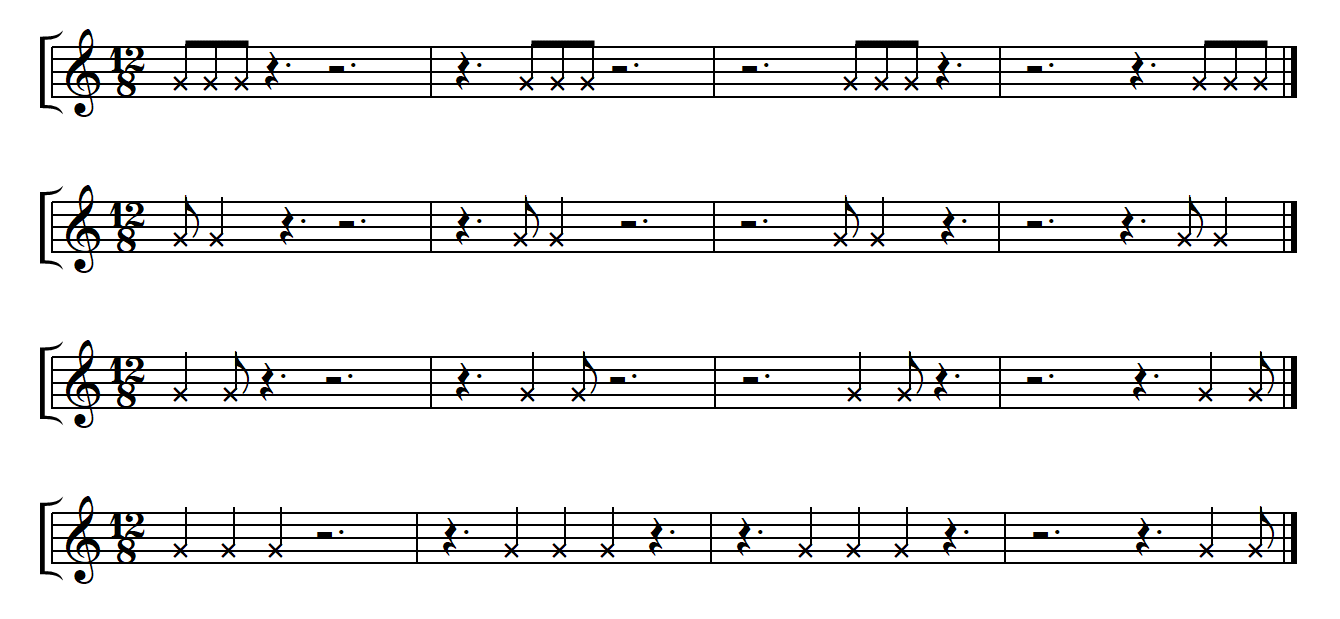 For improving the counting of singers, I developed clapping exercises. These canons are meant to do without sheet music. The singers will learn to internally visualise the different beats of the bar.
For improving the counting of singers, I developed clapping exercises. These canons are meant to do without sheet music. The singers will learn to internally visualise the different beats of the bar.
Let’s start with a simple exercise. Through this, the choral members will learn how these exercises work:

Next do the exercise in two-part canon in a slow tempo and then a little faster in four-part canon:

The choir members probably understand the exercise well and are able to perform it. Now you introduce the next exercise. This time, you clap two eighth notes and this pattern is shifted towards the end of the bar:

Perform this canon in two parts and in four parts. The singers will now get the hang of it. So we will make it a little more difficult again. This time we will clap two eighth notes, but now the first beat starts right before the beat:

The singers will have more trouble with this exercise. Therefore, take a slow tempo. Optionally explain the execise, by writing it down or by pointing out the beats on your fingers. You might do the exercise in two-part canon, but maybe skip the four-part canon.
You might do the above three exercises backward. That is, starting on the fourth beat and working back to the first beat. This is a little more difficult than the original exercises:

Here is an exercise which is definitely interesting. Make two claps with two beats in between. This time, the claps are shifting an eighth note instead of a quarter note:
 You might do this exercise backwards as well.
You might do this exercise backwards as well.
If you want to work on different measure, you might do the exercises in 3/4 and 5/4:

If you want to do even more difficult exercises, you might add sixteenth notes. But with this, the canons will suddenly get a lot more challenging (actually, none of my choirs succeeded in performing these):

Here’s another direction you might take the exercises, in 12/8-maat:
